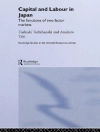Developing countries need to design projects to increase the growth and wellness of its human population, which involves the inclusion of topics associated directly with the sustainable development of these countries and their particular social problems. This book examines the interrelations between development, growth, the environment and inequality, especially in developing countries and taking into account qualitative and quantitative approaches. Increasing welfare of the population is important to the increase of human development through the improvement of developmental and environmental conditions, generating sustainable development where it is key to seek changes in public policies, economic, technological and social factors. This book aims to analyze different contexts from micro to macro level relationships between development, growth, inequality, environment and human development, and evaluate what the actual conditions in emerging economies are and how developing new strategies could improve the well-being of developing countries. The book is organized as follows: Saiz-Alvarez and Gamez identify the main components to propose an entrepreneurship model that includes distance, education, and information and communication technologies (ICTs) as alternatives to generate wealth and development in developing countries. In Chapter Two, Cutolo etal. describes an approach to current situations of water vulnerability in watersheds of metropolitan regions in tropical countries of South America, and the importance to improve the strategies to promote environmental health in these regions. In Chapter Three, Hashim shows a comparison from a historical point of view between two crops, one of them native to South America (quinoa) and the other from Africa (pearl millet). The comparison leads to the questions of whether or not reflexions consider pearl millet as an alternative to food security in African countries and as an incentive for women farmers. In Chapter Four, Palmer and Correa applied three groundwater indicators: a groundwater extraction indicator, a groundwater extraction for public supply per capita indicator and a groundwater vulnerability indicator to describe the different characteristics of the environment and propose this analysis as a tool to make decisions in environmental management within the Cove Basin at the Island of San Andres (Colombia). Correa in Chapter Five analyzes and assesses the impact that poverty and access to water have on labor productivity of the economically active population in Colombia. In Chapter Six, Daronco and Wartchow clarify how the Brazilian policies about water resources have been based on the laws developed at the time of discovery in 1500. Additionally, it regards the culminating active level in the National Water Resources System (NWRS) today. Finally, Castellanos conducts a search and reflection of bioethical dilemmas in veterinary medicine, identifying sources of stress and coping strategies in Chapter Seven.
Gustavo Correa Assmus & Astrid Geovana Munoz Ortiz
Development, Growth, Environment and Social Equity [PDF ebook]
Development, Growth, Environment and Social Equity [PDF ebook]
قم بشراء هذا الكتاب الإلكتروني واحصل على كتاب آخر مجانًا!
شكل PDF ● صفحات 184 ● ISBN 9781634847940 ● محرر Gustavo Correa Assmus & Astrid Geovana Munoz Ortiz ● الناشر Nova Science Publishers ● نشرت 2016 ● للتحميل 3 مرات ● دقة EUR ● هوية شخصية 7226625 ● حماية النسخ Adobe DRM
يتطلب قارئ الكتاب الاليكتروني قادرة DRM












